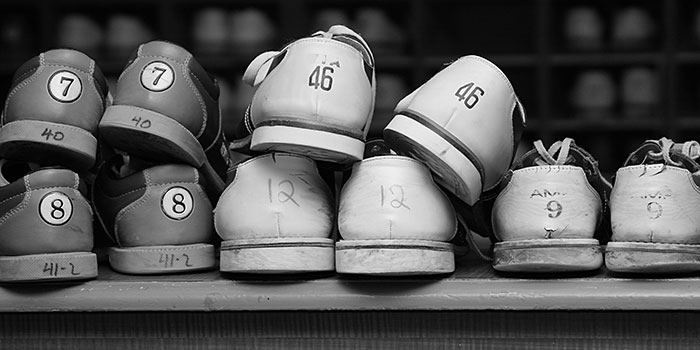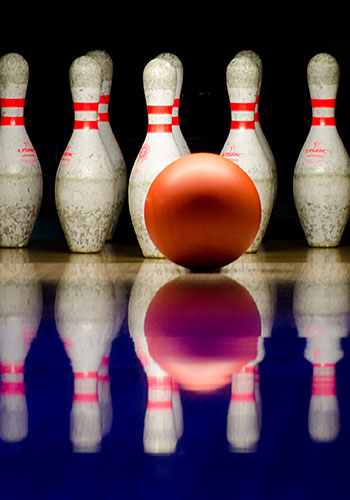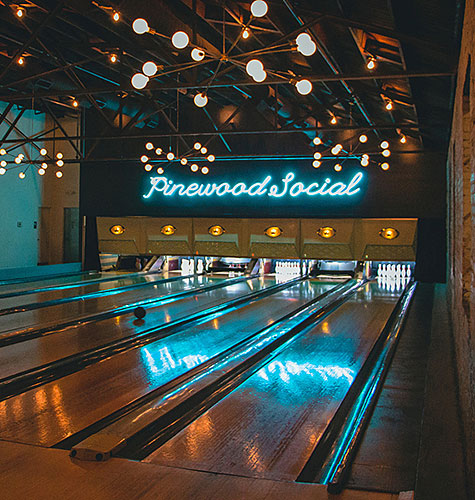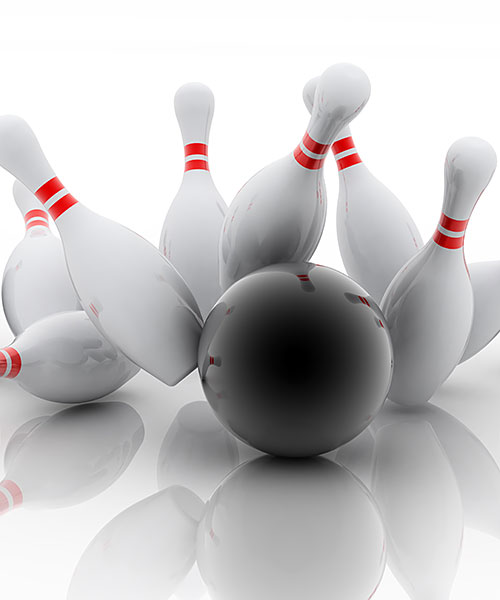



History Of The Bowling
- ArticlesandContent.com (CIRCA 2005)
- /
- Oct 8, 2021 (written 2005)
Bowling has evolved since that time and it is estimated that anywhere from 65 to 95 million people play the game today. The game of bowling is presently appreciated in more than ninety countries worldwide.
The history of bowling is traceable to ancient Egypt. A discovery made in the twentieth century revealed an ancient Egyptian grave that contained, among other objects, bowling pins and a bowling ball. This dates the first bowling equipment as being nearly 5200 years old. Bowling has evolved since that time and it is estimated that anywhere from 65 to 95 million people play the game today. The game of bowling is presently appreciated in more than ninety countries worldwide.
The Beginning
In the 1930s, Sir Flinders Petrie, an anthropologist from Britain, found a variety of objects buried in the grave of an Egyptian child. Some of the objects appeared to be crude and ancient bowling equipment; this allowed Petrie to trace the game of bowling to the year circa 3200 BCE. This assertion is not accepted by all historians however; some researchers like William Pehle, a German historian, argue that the game of bowling can be traced to regions in Germany and to the year 300 CE. There is some considerable evidence documenting the fact that bowling was a very popular game in England in the late 1360s; in fact, Edward III, the reigning king at the time, had banned bowling games because it was causing his military to avoid archery training. Historians also assert that King Henry VIII enjoyed bowling during his rulership and that he may have used a cannon ball as a bowling ball when he played.
The way bowling has been played has also changed over time. Many of the earliest games involved the use of a ball that was fingerless; today’s bowling balls have two to three finger holes intentionally drilled into the balls for ease of grip. In Edinburgh, Scotland, one version of ancient bowling involved using a ball absent of finger holes that was then heaved at bowling pins; the bowler however, would flop down onto the lane when casting the ball and land on his stomach. There were a number of game variations and the game of bowling remains equally diverse today. Some researchers trace the game of bowling to games like bocce, played in Italy, and petanque, played in France, which later led to “lawn bowling” in Britain.
Bowling: Its Evolution
The Germans, English, and Dutch colonists brought different bowling variations to America. The earliest documented American reference to the game is made by the author Washington Irving in his story about Rip Van Winkle; having been asleep, the character is awakened by the loud, crashing sound of ninepins. The first location that was made a permanent site for lawn bowling activities may have very well been established in Battery, New York: this location is still identified as “Bowling Green.”
The game of bowling was acceptable entertainment for a period of time and then it became unacceptable in some areas. In the early 1840s, the game was banned in Connecticut and no one was allowed to maintain ninepins; this may have something to do with the game of bowling being associated with gambling activities at the time. Nevertheless, the game still remained one enjoyed by many and many people had bowling lanes installed in their newly erected mansions.
The ninepin game of bowling proved popular until the ten pin game came into being sometime in the late 1800s. The ten-pin variation of bowling proved most popular in places like Illinois, Ohio, and New York. Ball and pin weights and sizes differed from one location to the next until Joe Thum, a restaurant owner, decided to call forth representatives from a variety of bowling clubs. By 1895, the American Bowling Congress was established and the game of bowling was on its way to being regulated and standardized. With the American Bowling Congress was an association for males, by the year 1917 another congress was formed for female: the Women’s International Bowling Congress.
By the late 1920s, there were regulations put into place at many bowling alleys that threatened to cast out any players who gambled when they bowled or gambled on bowling games. The latter regulations were again changed in the mid 1970s when gambling once again became acceptable in a number of bowling alleys in Reno and Las Vegas, where the casino environment thrives. By the 1940s, bowling alleys were regulated inspected by law and in the same year the first National Negro Bowling Association, now changed to the National Bowling Association, was established. A year later a Hall of Fame was created: the ABC hall of Fame, and from 1941 to 1945 many military members in World War II played bowling after 4500 alley beds were built by the military. By the late 1940s, arrow markers and dots appeared on bowling lanes in Brunswick to improve bowling accuracy.
By the late 1950s, the Professional Bowlers Association was established by a sports newscaster and an Akron based attorney by the name of Eddie Elias. In the early 1960s, the first disabled association for bowlers was established too; the American Wheelchair Bowling Association. Later, in 1978, an African American bowling pioneer by the name of J. Elmer Reed was the first African American to ever be officially inducted into the ABC Hall of Fame for bowlers: formerly, the Hall of Fame was a “white only” honor. In the early 1980s, a pro tour for women was established: the Ladies Pro Bowlers Tour. A year later, the ABC-WIBC collegiate divisions, the Youth Bowling Association, the American Junior Bowling Congress, and the Young American Bowling Alliance were formed for youthful players in the United States. Finally, it was not until the early 1990s that females could be inducted into the ABC Hall of Fame: a decision made only after women activists protested the exclusion of females from the prestigious title.
History Of The Bowling Ball, Pins and Alley
Bowling balls, bowling pins, bowling shoes, and bowling ball styles all evolved from the creation and eventual development of the sport. Thus, the use of bowling equipment is intricately woven into the history of the bowling game itself.

History Of The Bowling Ball
Today more than 65 million people play bowling games on an annual basis. Presently, bowling games are played with different bowling balls made of a variety of materials and consisting of varying weights. Modern bowling balls are made to perform well with surface variations and can be chosen to further enhance a bowlers playing style. The bowling balls in use today are nothing like the first bowling balls used in games like lawn bowling.
Bowling balls during the Medieval era were asymmetrical and they were not exactly round in shape; their unique shaped allowed for the balls to have a natural curve when they were tossed. The first bowling balls had a an asymmetrical shape because it affected the balance of the ball as well as its spin. The earliest bowling bowls were absent of the finger holes one would find on modern bowling balls today too.
Bowling balls were originally created out of a wood material identified as lignum vitae. By 1905, the first bowling balls made of rubber materials were offered. Later, in the early 1920s, a newer kind of bowling ball made of rubber was offered by Brunswick Corporation: the ball was identified as the Minerality. This ball proved popular until the 1970s. Even later, bowling balls were created out of polyester materials and by the mid 1980s; the most popular bowling balls were manufactured with materials consisting of urethane. Today, bowling balls are made with one of three distinct exterior coatings including polyester, urethane, and reactive urethane.
History Of Bowling Pins
Just like bowling balls, bowling pins have changed over time in terms of their overall design. The first bowling pins, just like bowling balls, were made of wood materials like Maple. Sometimes the pins were made of stone. Pins were shaped through the use of a lathe tool. Wooden pins were coated with a plastic exterior coating and the pins are given a high gloss finish with a polyurethane coating.
Today, the size and weight of bowling pins is strictly regulated by the American Bowling Congress. All pins have to be no greater than 4 3/4 inches in width and they can must be exactly 15 inches in height: this allows for a uniformity in terms of pins design. Every pin is designed so that it weighs exactly four pounds too. Pins are offered in standard varieties, they come in duckpin, and candlepin forms as well.
In the 1930s, archaeologists found bowling pins in Egyptian tombs; these pins, along with bowling balls were dated to circa 320 BCE. This finding is the earliest known reference to the game. Some historians argue that bowling and bowling equipment came from Germany sometime around 300 CE. This German link is associated with the game of Kegelspiel or Kegal: a game using nine skittles or pins and rolling balls. The first written documentation of the game is traced to England during the reign of King Edward III when he banned the military from participating in the game because it caused them to neglect their training in archery. Some historians believe that King Henry VIII used a cannon ball to bowl; interestingly, this same king banned the game for the elite members of society because the game was causing so many to neglect the duties of their trade.

History Of Bowling Alleys And Shoes
As mentioned earlier, the very first bowling games were played on outdoor lawns. Bowling alleys as they are now appreciated were not really developed until the late 1950s and the 1960s. The first alleys were erected in the western region of the United States and a lot of money to build. A bowling alley was erected in Santa Monica in 1959 that cost nearly 2000000.00 to complete. Another bowling alley was created in California in Indio in the 1960s at the cost of $750000.00. By the year 1962, a total of nine alleys had been created in the western United States; the largest being situated in El Cajon: the Parkway Lanes sported sixty alleys for bowling and cost one million dollars to develop. This bowling alley also maintained five acres of space for parking.
Many of the early bowling alleys had an array of entertaining features. Developers added snack bars, billiard rooms, cocktail bars, and areas where children could play as well. This is what helped to make bowling appealing to every member of the family, no matter what the age and also helped in driving customers to spend more family time at local bowling alleys. In the early 1960s, bowling alleys were also built in places like New Zealand and Australia too.
The exact date when bowling shoes were first used and manufactured is unclear. In certain cultures it may have been that footwear while bowling was optional, however, since the game of lawn bowling occurred outdoors, it is relatively safe to assume that shoes were worn by participants in the game. Of what little traceable history there is related to bowling shoes, historical records indicate that a Dermative shoe was introduced in America in the year 1888. The shoe was crafted out of leather and had water resistant properties. These early shoes were so versatile that they proved beneficial for those who enjoyed boating, cricket, tennis, or bowling. Over time, bowling shoes were crafted with stronger stitching: since lanes were oiled down so that the ball could move done the lane with greater ease, bowling shoes had to offer superior grip.